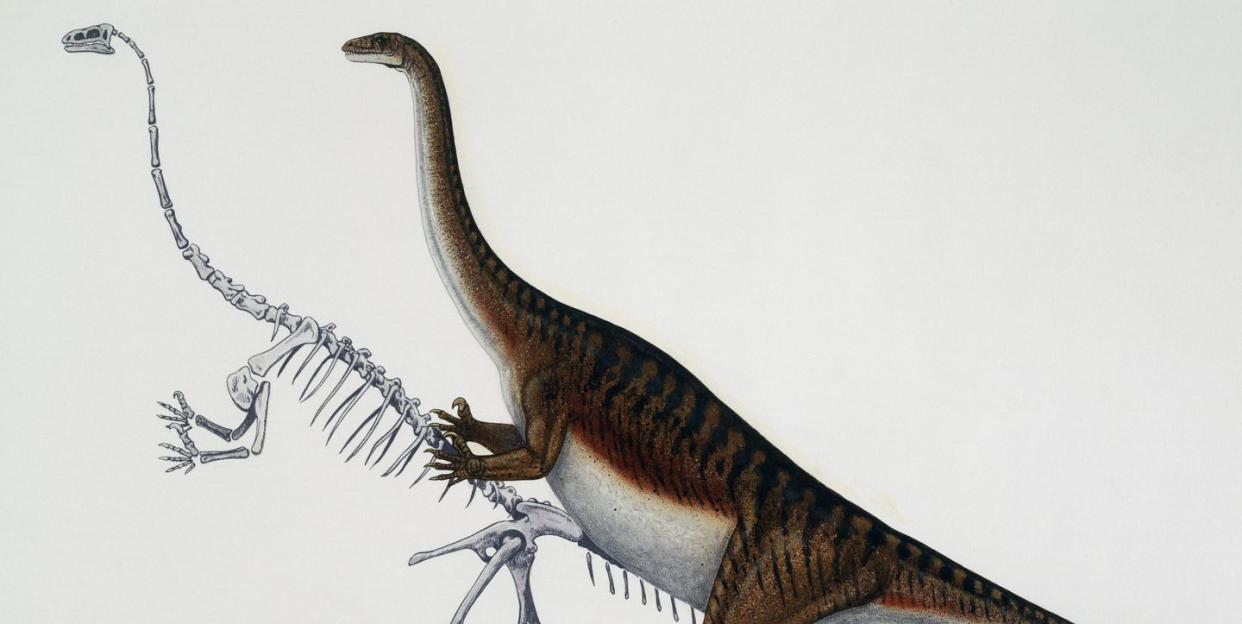Scientists Reconstruct Embryonic Dinosaur Skulls in Beautiful Clarity

Researchers from the University of Witwatersrand in South Africa have used a synchrotron machine to create 3D renderings of embryonic dinosaur skulls.
The team analyzed fossils first discovered in 1976.
The findings seem to corroborate the theory that modern reptiles evolve similarly to their prehistoric cousins.
Dinosaur embryos are among some of the rarest fossils in existence. They’re notoriously hard to come by, which makes it difficult to find out more about how they developed in utero millions of years ago.
But a new paper highlights the power of modern tech in bringing the past back to life—in a way. Researchers from the University of the Witwatersrand in Johannesburg, South Africa have been able to take an in-depth look at Massospondylus carinatus, an suspected omnivore that lived during the early Jurassic period.
Using a synchrotron particle accelerator, researchers were able to discover that the M. carinatus embryos had teeth which either got “resorbed or shed before hatching, similar to those of geckos.” They were also able to deduce that the embryo’s were “approximately 60 [percent] through their incubation period” even though they looked much more fully developed.
The team used the European Synchrotron Radiation Facility (ESRF) in Grenoble, France, to analyze seven M. carinatus eggs via a process called propagation phase contrast. This allowed the researchers to take snapshots of the embryos with an x-ray beam that provided the team with an incredible opportunity: they were able to see all the way down to the bone cells that had been frozen in time. Using the ESRF also enabled the researchers to create 3D digital reconstructions of the embryonic dinosaur skulls in stunning clarity.
Another noteworthy discovery surrounding this research was that it provided evidence that dinosaurs developed in a similar fashion to modern reptiles—a long held belief that’s seemingly corroborated by the team’s findings.

Vincent Fernandez, one of the paper authors, told Inverse that although the reconstruction process was painstakingly long, it was worth it.
“This is a very special moment, knowing you are the first one to see such a beautiful specimen,” he shared, adding that one of his favorite aspects of this research project is “when the bones are put back in 3D, and we see the big eye socket of the dinosaur, it really starts looking like a baby.”
Source: Inverse
You Might Also Like

